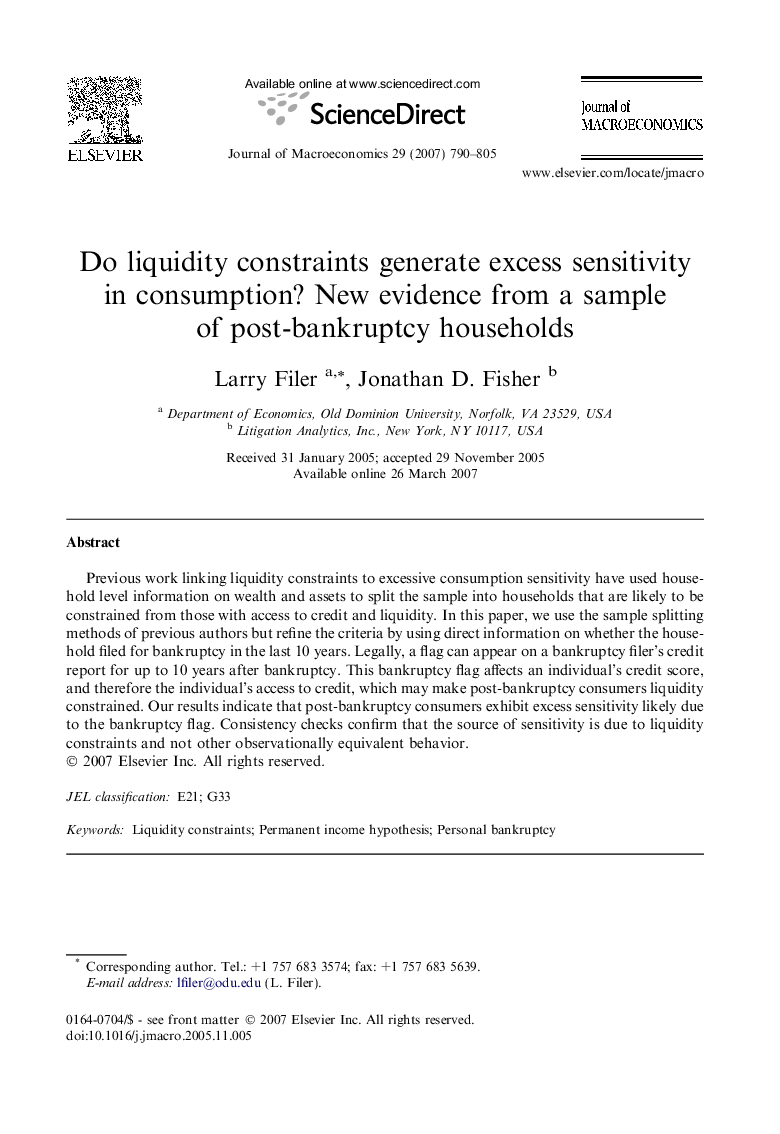| Article ID | Journal | Published Year | Pages | File Type |
|---|---|---|---|---|
| 966257 | Journal of Macroeconomics | 2007 | 16 Pages |
Abstract
Previous work linking liquidity constraints to excessive consumption sensitivity have used household level information on wealth and assets to split the sample into households that are likely to be constrained from those with access to credit and liquidity. In this paper, we use the sample splitting methods of previous authors but refine the criteria by using direct information on whether the household filed for bankruptcy in the last 10 years. Legally, a flag can appear on a bankruptcy filer's credit report for up to 10 years after bankruptcy. This bankruptcy flag affects an individual's credit score, and therefore the individual's access to credit, which may make post-bankruptcy consumers liquidity constrained. Our results indicate that post-bankruptcy consumers exhibit excess sensitivity likely due to the bankruptcy flag. Consistency checks confirm that the source of sensitivity is due to liquidity constraints and not other observationally equivalent behavior.
Related Topics
Social Sciences and Humanities
Economics, Econometrics and Finance
Economics and Econometrics
Authors
Larry Filer, Jonathan D. Fisher,
